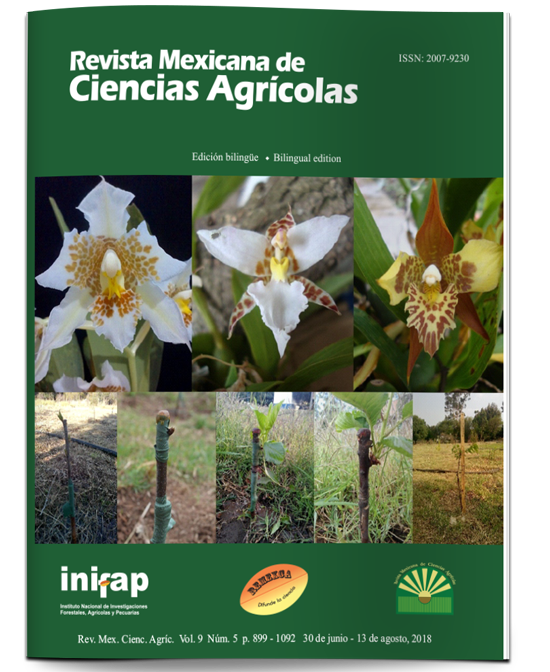Isolation, characterization and pathogenicity of fungi causing descending death of American Black Walnut
DOI:
https://doi.org/10.29312/remexca.v9i5.1509Keywords:
Alternaria alternata, Pestalotiopsis steyaertii, Rhizoctonia binucleada, Trichothecium roseum, fungi in cankersAbstract
American black walnut (Juglans nigra L.) is affected by phytosanitary problems, highlighting fungi that cause cankers in branches, reducing fruit production up to 60% of the average yield that is 1.9 t ha-1. The objectives of this investigation were to identify the fungi associated with cankers present in branches of trees of J. nigra with symptoms of descending death and to evaluate their pathogenicity. Canker fungi were isolated from branches with symptoms of descending death collected in two orchards of the state of Coahuila. Four fungal morphotypes were obtained and one strain of each was used for its morphological identification at the genus level, and by sequencing the ITS1 region to ITS2 of the ribosomal genes (rDNA) for its identification at the species level. Pathogenicity tests were performed on four-month-old J. nigra seedlings, making a 3 mm long stem fissure and inoculating with each identified species. The fungi associated with the cankers of J. nigra were morphologically identified as members of the genera Trichothecium, Pestalotiopsis, Alternaria and Rhizoctonia. By means of the BLAST analysis in the GenBank of the sequences of the ITS1 to ITS2 region it was possible to determine that the strains were related to the species Trichothecium roseum, Pestalotiopsis steyaertii, Alternaria alternata and to an undetermined binucleate species of Rhizoctonia. The inoculation of the four strains to seedlings showed that they are pathogenic to J. nigra.
Downloads
Downloads
Published
How to Cite
Issue
Section
License
The authors who publish in Revista Mexicana de Ciencias Agrícolas accept the following conditions:
In accordance with copyright laws, Revista Mexicana de Ciencias Agrícolas recognizes and respects the authors’ moral right and ownership of property rights which will be transferred to the journal for dissemination in open access. Invariably, all the authors have to sign a letter of transfer of property rights and of originality of the article to Instituto Nacional de Investigaciones Forestales, Agrícolas y Pecuarias (INIFAP) [National Institute of Forestry, Agricultural and Livestock Research]. The author(s) must pay a fee for the reception of articles before proceeding to editorial review.
All the texts published by Revista Mexicana de Ciencias Agrícolas —with no exception— are distributed under a Creative Commons License Attribution-NonCommercial 4.0 International (CC BY-NC 4.0), which allows third parties to use the publication as long as the work’s authorship and its first publication in this journal are mentioned.
The author(s) can enter into independent and additional contractual agreements for the nonexclusive distribution of the version of the article published in Revista Mexicana de Ciencias Agrícolas (for example include it into an institutional repository or publish it in a book) as long as it is clearly and explicitly indicated that the work was published for the first time in Revista Mexicana de Ciencias Agrícolas.
For all the above, the authors shall send the Letter-transfer of Property Rights for the first publication duly filled in and signed by the author(s). This form must be sent as a PDF file to: revista_atm@yahoo.com.mx; cienciasagricola@inifap.gob.mx; remexca2017@gmail.
This work is licensed under a Creative Commons Attribution-Noncommercial 4.0 International license.



